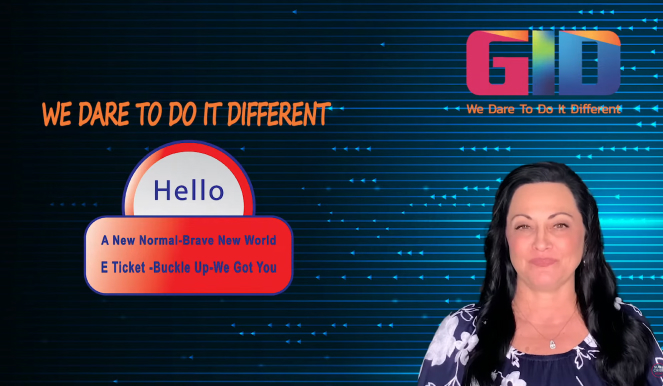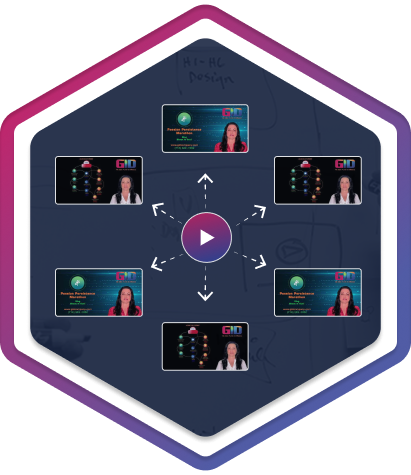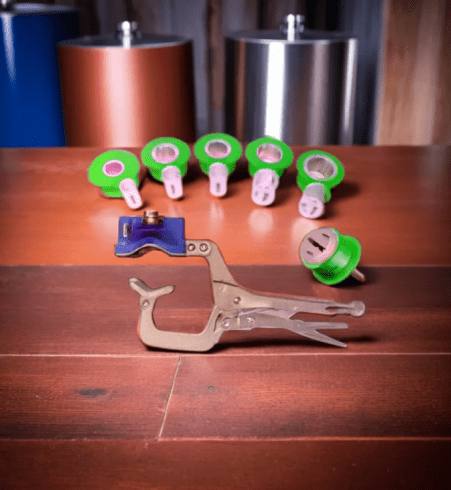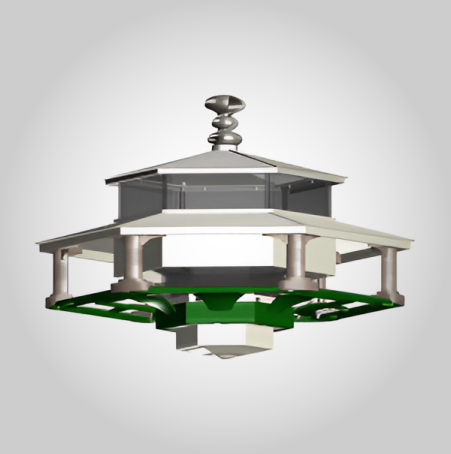Product Development Services - GID Company
Leading Product Development Company in California

Product Development Services
By investing in product design and development, businesses can:
- Unlock New Revenue Streams: Product design & development opens doors to untapped markets and demographics, enabling businesses to expand their product portfolio and reach new customers.
- Drive Sustainable Growth: Innovative products attract new customers and retain existing ones, leading to increased sales, market share, and long-term profitability.
- Gain a Competitive Edge: Product Design & Development allows businesses to differentiate themselves from competitors by offering unique, cutting-edge solutions that capture consumer interest and loyalty.
- Enhance Brand Reputation: Successful products build brand equity and strengthen customer trust, positioning the company as an industry leader and innovator.
- Foster a Culture of Innovation: Product design encourages creativity, experimentation, and risk-taking within an organization, fostering a culture of continuous improvement and growth.
GID Company offers comprehensive product design and development services that cover every phase of bringing a new product to market, from initial idea to final delivery. Our services are designed to help businesses across various industries turn their innovative concepts into successful, market-ready products.
Product Development Services What's included?
Trusted Product Development Company in California, USA
As one of the top product development companies - GID Company's Product Development Services are a comprehensive suite designed to guide your innovation from concept to reality. We understand that every product journey is unique, so we tailor our approach to your specific needs and goals. Our services encompass every critical stage of the Product Development Process:
Ideation & Concept Validation
We collaborate with you to brainstorm, refine, and validate your product ideas. This includes market research, competitor analysis, and feasibility studies to ensure your concept has a solid foundation for success.
Design & Engineering
Our team of skilled designers and engineers translates your concept into a detailed, manufacturable design. We prioritize functionality, aesthetics, user experience, and cost-effectiveness throughout the design process.
Prototyping & Testing
We build prototypes to bring your design to life, allowing for early evaluation and testing. We gather feedback from users and stakeholders, iterate on the design, and ensure the product meets performance and safety standards.
Manufacturing & Supply Chain Management
We help you identify and partner with reliable manufacturers. We manage the entire supply chain, from sourcing materials to production and delivery, ensuring your product is manufactured efficiently and cost-effectively.
Market Launch & Commercialization
We support your product launch with marketing and sales strategies, ensuring a successful entry into the market. We also provide ongoing support to monitor product performance and identify opportunities for improvement.
From Idea to Reality - Watch How We Do It!
Explore our videos to see how we seamlessly transform your ideas into reality.

Product Development Life Cycle - GID Company
Comprehensive Product Development Services in California
-
Idea Validation
We start with validating your product idea through market research, feasibility studies, and customer insights. This early assessment helps ensure that your concept holds potential in competitive markets and aligns with user needs. -
Concept Development
Our team collaborates with you to refine and enhance your idea, turning it into a viable product concept. This process involves brainstorming sessions, sketching, and preliminary designs to visualize the potential of your product. We follow measure twice cut once approach for best results. -
Design and Prototyping
Using the latest in CAD software and prototyping technology, we create detailed designs and functional prototypes. This critical stage allows for testing form, function, and user interaction, providing the opportunity to iterate before finalizing the design. -
Engineering
Our engineering team takes over to develop the technical aspects of your product, ensuring it is not only manufacturable but also robust and compliant with all necessary standards. This includes mechanical, electrical, and software engineering, depending on the product requirements. -
Regulatory Compliance
We navigate the complexities of regulatory compliance to ensure that your product adheres to all industry-specific guidelines and legal requirements. This includes obtaining necessary certifications and making sure the product is safe for consumer use. -
Manufacturing Setup
Transitioning from prototype to production is seamless with our comprehensive manufacturing support. We assist in selecting the right manufacturing partners, setting up production lines, and overseeing the manufacturing process to ensure quality and efficiency. -
Quality Control
Throughout the manufacturing process, we implement stringent quality control measures. Our team conducts inspections and testing to ensure every product meets the predefined standards and specifications. -
Product Refinement
We refine the design based on feedback and testing results, optimizing functionality, user experience, and manufacturability. -
Market Launch and Distribution
We partner with trusted manufacturers to produce your product efficiently and cost-effectively, ensuring quality control at every step. -
Marketing & Launch
Our services extend to helping you successfully launch your product in the market. We provide support in marketing strategy, launch planning, and distribution channels, ensuring that your product reaches its target audience effectively. -
Post-Launch Support
After your product hits the market, we offer ongoing support to handle any post-launch issues, including customer feedback management, product updates, and iterations. This ensures long-term success and customer satisfaction. -
Continuous Improvement
We believe in continuous improvement and regularly review and refine our processes to incorporate the latest technologies and methodologies. This approach helps keep your product competitive and aligned with market trends.
Why Choose GID Company for Your Product Development Needs
Go with Experts Product Development Agency in California, USA
GID Company is your strategic partner in turning your new product dreams into reality. We offer a unique combination of creativity, technical expertise, and market insights to guide your product through every stage of development, ensuring a successful launch and sustained growth. Here's why choosing GID Company as product development firm for your product development is a smart move:
Proven Track Record of Success
We have a long history of helping businesses bring innovative products to market. Our portfolio showcases a diverse range of successful product launches across various industries, demonstrating our ability to tackle complex challenges and deliver results.
End-to-End Expertise
From ideation to commercialization, we offer comprehensive services that cover every aspect of the new product development process. Our team works seamlessly together to ensure your product is developed efficiently and effectively.
Customer-Centric Approach
We put your customers at the heart of our new product development process. We conduct thorough market research to understand your target audience's needs, preferences, and pain points, ensuring your product is designed to meet their specific requirements.
Cutting-Edge Technology
We utilize state-of-the-art design and prototyping tools, as well as advanced manufacturing techniques, to create products that are not only innovative but also functional, reliable, and cost-effective.
Collaborative Partnership
We believe in open communication and collaboration throughout the entire new product development process. We work closely with you to understand your vision, goals, and constraints, ensuring your input is valued and incorporated into the final product.
Focus on Results
We are committed to delivering results that exceed your expectations. We measure our success by your success, and we strive to create products that not only meet market needs but also drive business growth and profitability.
Not Sure Where To Start?
Call JIM
Our Portfolio: A Showcase of Success Stories
California, USA Based Leading Product Development Firm
Our portfolio showcases a diverse range of products we've helped bring to life. From innovative concepts to market-leading solutions, explore the success stories that demonstrate our commitment to turning ideas into reality.
Frequently Asked Questions - FAQs
-
How to find a product manufacturing company?
To find the right product development company near you, look for one with a proven track record, industry expertise, and comprehensive services. GID Company stands out as a leading provider of Product Manufacturing services, offering end-to-end solutions from concept to production.
-
What are product development services?
Product development services encompass the entire process of creating a new product, including design, prototyping, testing, and manufacturing. GID Company’s Product Manufacturing services ensure every stage of development is handled with precision, helping you bring innovative products to market.
-
How much do product development services cost?
The cost of Product Development Services depends on factors such as product complexity, materials, and required testing. GID Company offers flexible pricing, ensuring you receive high-quality services that align with your budget while delivering market-ready products.
-
What are the 5 stages of product development?
The 5 stages of Product Development include:
- Idea Generation
- Concept Development
- Prototyping
- Testing and Refinement
- Commercialization
At GID Company, we guide you through each stage, ensuring a seamless journey from idea to market-ready product through our comprehensive Product Manufacturing services.
-
What are the 4 major types of product development?
The 4 major types of Product Development are:
- New Product Lines
- Product Improvements
- Product Line Extensions
- New-to-the-Market Products
GID Company specializes in all these areas, offering customized Product Manufacturing solutions to meet your specific needs and market demands.
-
What are the 5 P's of product development?
The 5 P’s of Product Development are:
- Product
- Price
- Promotion
- Place
- People
At GID Company, our Product Manufacturing services ensure that every aspect of your product is considered, from its creation to how it is marketed and delivered.
-
What is the 3rd step in product development?
The 3rd step in Product Development is Prototyping. At GID Company, we create detailed prototypes to test the product’s functionality, design, and usability before moving forward to full-scale production.
-
What does a product development company do?
A product development company transforms ideas into tangible products by handling design, prototyping, testing, and manufacturing. GID Company provides expert Product Manufacturing services, ensuring your product is innovative, functional, and ready for the market.





















